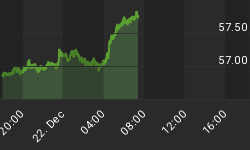In 2008 the Reserve Primary money market fund famously broke the buck as its Lehman Brothers bonds plunged in value. For those who don't know, breaking the buck means that the share value for the fund falls below a $1 Net Asset Value.
It has long been sacrosanct in the mutual fund industry that money market funds must maintain their $1 NAV. But in 2008 this idea was finally exposed for the fraud that it is. And now in order to keep the charade going, the Investment Company Institute, a mutual fund trade group, has presented the idea of a liquidity bank that would be a bailout mechanism for money market funds if they are in danger of going below the $1 NAV level.
The idea from the ICI is for each money market fund to contribute .03% of assets to the liquidity bank. If a fund faced serious withdrawals then the bank could buy securities from the fund's portfolio, propping up the NAV and giving it cash to meet investor redemptions. Part of the reason for this new idea is an attempt to assuage investor concerns about money funds in general. After the Reserve Primary fund broke the buck, total assets in money market funds began to decline. It also hasn't helped that, thanks to the Federal Reserve, short-term interest rates are near 0%. Because of these two problems, money market fund assets have plunged from the peak, as can be seen in the chart below (courtesy of the Wall Street Journal).

There are at least two glaring problems with the idea for a liquidity bank for money market funds. First, it creates one more moral hazard in an industry filled with moral hazard already. Any type of bailout mechanism will no doubt add to the incentive for portfolio managers to increase their level of risk and therefore the reported yield of their funds. Many money market fund portfolio managers already believe that the government will step in to guarantee their $1 value, just as happened in 2008, if the markets freeze up again. Secondly, it is highly doubtful that .03% of assets would collect enough bailout money in the event of another financial collapse.
There is one simple solution to all of this discussion around the idea of a never-changing $1 NAV for these funds. Let the NAV float like other mutual funds do. It is at best confusing and at worst fraudulent for these funds to advertise a $1 NAV every single day when clearly the underlying asset values change. It is akin to pegging the exchange rate of a currency. Letting the NAV float to its true value would also eliminate one of the worst problems that money market funds faced in 2008 and 2009: There would be much less risk of a run on the funds' assets. There would basically be no incentive for investors to try to get out first before the fund breaks the buck because the NAV would float to its true value each day.
The last thing the finance industry needs is another bailout mechanism and further moral hazard. The $1 NAV for money market funds is the Maginot Line of the mutual fund industry. It is merely a mirage of stability when credit markets collapse. The proposal of a liquidity bank is one idea that needs to be shot down.















